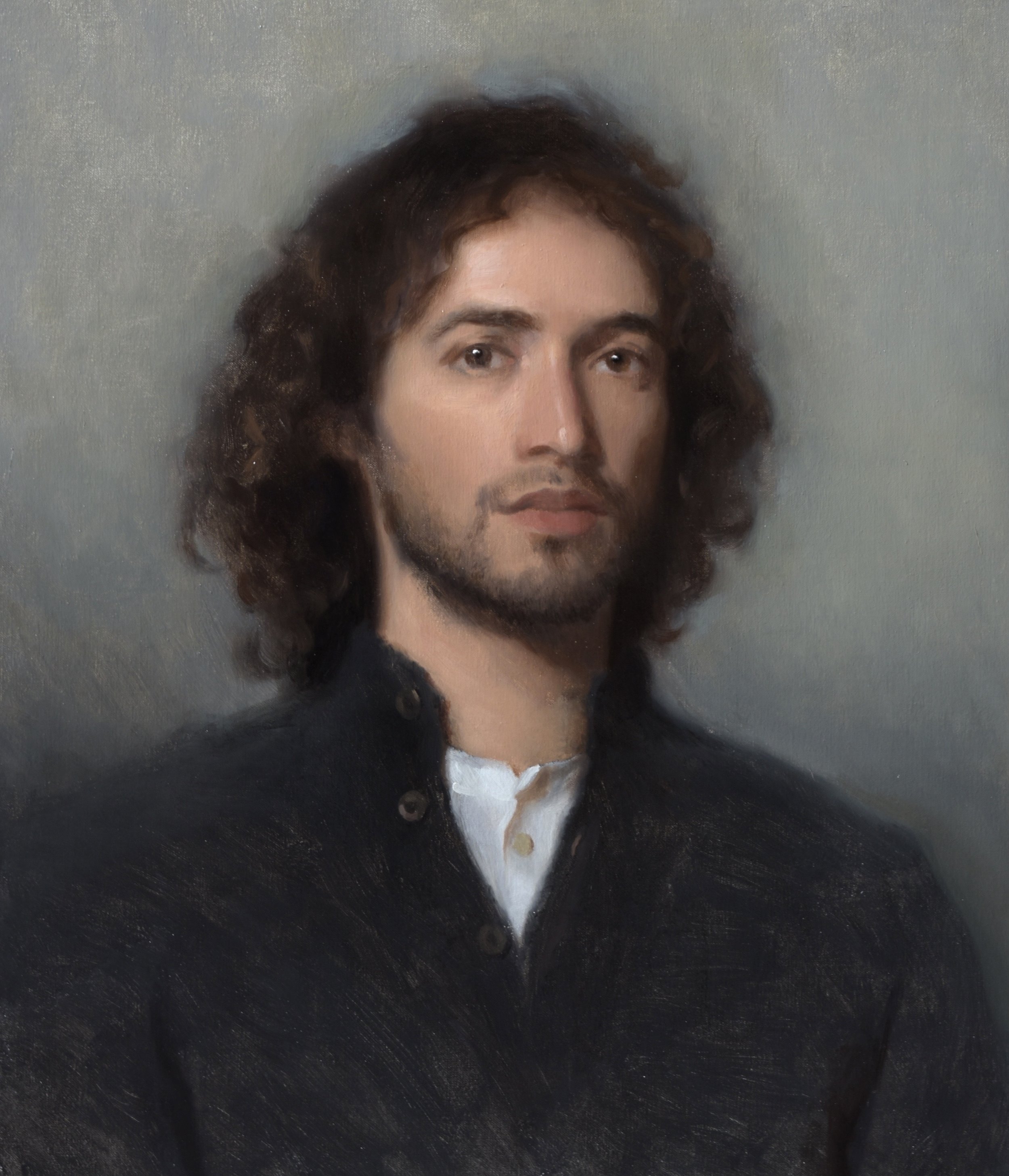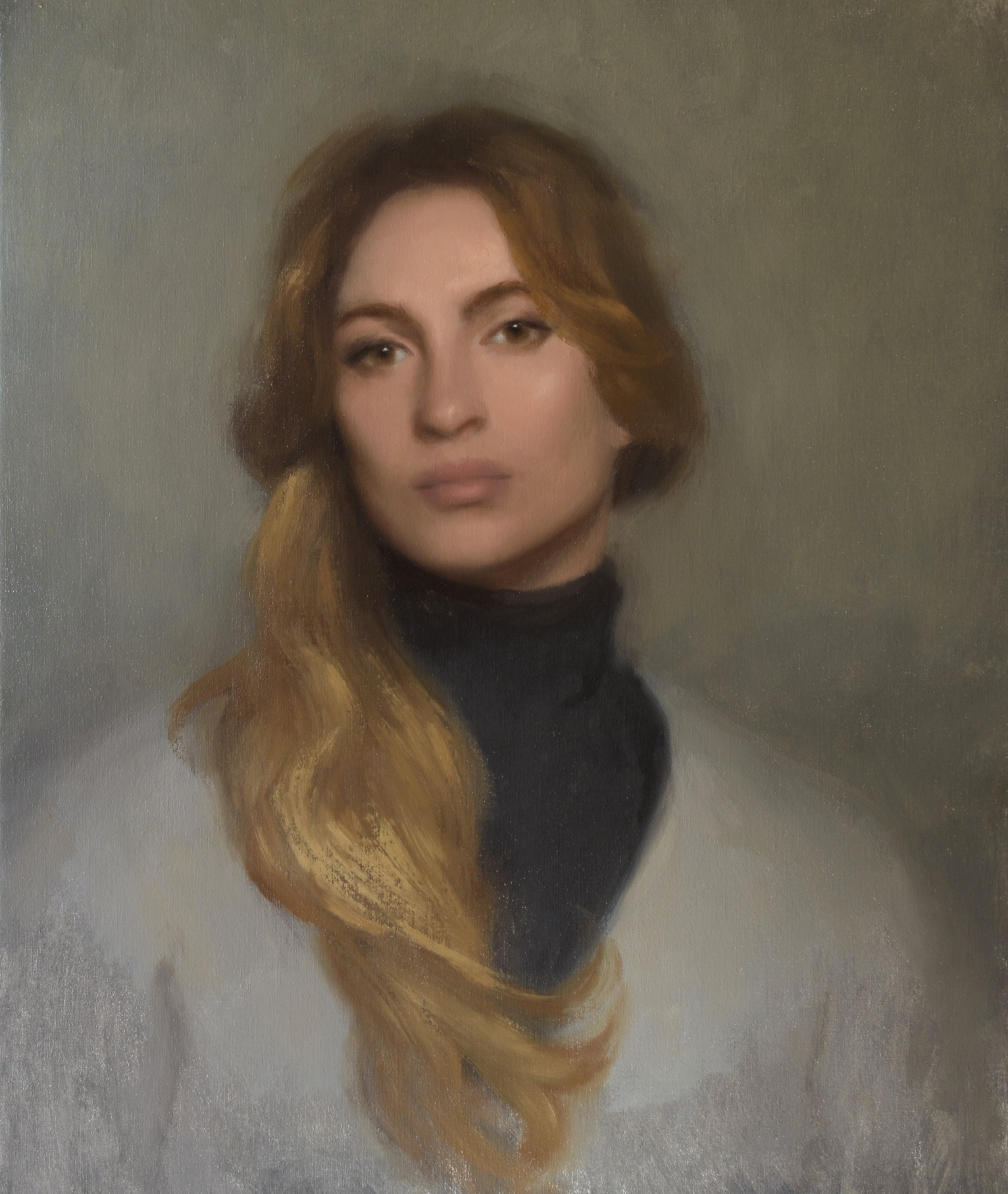ARTIST INTERVIEW: Troy Argyros
Please introduce yourself. What ignited your passion for art?
My name is Troy Argyros, I'm a realist painter originally from Melbourne, and currently painting in Florence.
My passion for art was ignited by an innate desire to draw which has been with me since early childhood, but was fed by study of the old masters and an appreciation for the beauty of the natural world.
Why did you decide to go to Florence to study? How did your studies at the Charles.H Cecil Studios influence your work?
I decided to go to Florence because I felt (and still feel) it is the best city in the world to study drawing, painting and sculpture in the realist tradition, due to it's incredible academies and ateliers which offer very rigorous and effective training in these disciplines. The backdrop of beautiful Florence is particularly inspiring for the student, and there are countless works of art at your doorstop.
My studies at Charles H. Cecil Studios influenced my work significantly, freeing me from the constraints of a slower, structural painting method and allowing me to discover a more fluid process based on capturing the visual impression. The use of their particular painting medium and starting directly with colour helped me to get faster, and to enjoy the intuitive aspects of painting from life.
What do you find fascinating about the human face? What are the characteristics of an interesting face to paint?
What I find fascinating about the human face is the beauty of our structure and facial features, and how they can express our inner world or a universal experience. I think all faces can be interesting to paint, and finding the particular ensemble that brings out the individual's beauty and interest is part of the design challenge at the beginning of each new portrait. Tranquil or pensive expressions fascinate me the most as they are a subtle variation on neutrality which is interesting to contemplate and practical when working from life. I believe it is in this state we see a person's individuality best, rather than the fleeting emotions that are never held on the face for long periods.
Describe your process for creating one of your portraits. How do you establish the composition?
The process for creating one of my portraits begins with the model doing a slow head rotation so I can study the light on their face, and helps me to select the most beautiful or interesting arrangement of light and dark shapes. Then deciding where they'll look, what that expresses in the portrait, and how it relates to the positions of the head and shoulders. Then a background colour is selected if the wall colour does not complement the sitter, and clothing options considered simultaneously. Usually the large shape of the hair is also a key shape along with the background and clothing that frames the face and creates "the ensemble".
What are your thoughts on the Leonardo da Vinci quote, ‘Where the spirit does not work with the hand, there is no art.’?
The Leonardo quote "where the spirit does not work with the hand there is no art" rings true for me because authenticity is so important, and even if an artwork was commissioned it should still contain something personal of the artist, which is the vital human element that makes art relatable.
Out of all the work you have created, which piece are you most proud of and why?
Of all the work I have made so far the piece I'm most proud of is "The Painter", because it contains my best efforts in both technique and message. It has a story that is both personal to me and relatable to many other painters living in the current times, where we often struggle to find legitimate training. I achieved my personal ideal balance between form and atmosphere, delicate colour harmonies and a combination of direct and indirect painting techniques, sitting upon an elegant yet dynamic composition due to the sweep of her arm and interesting head tilt. A personal aesthetic and careful observation came together really well. And to top off the experience I sold it to a wonderful collector in the UK.
Who is your favourite artist? If they were sat next to you right now, what would you ask them? Do they have an influence on your work?
Choosing one favourite artist is almost impossible, however I'm often finding myself most in love with Vermeer. His work is exquisite in technique, quiet in ambience, gem-like and scarce, reminding me that quality and sincerity will always win over quantity and flashiness. His influence on my work is evident more so in my early still life work, which was small scale and extremely meticulous. The ethereal spirit of his figures is what interests me most now, the way the subdued light and shadow reveals and obscures them, evoking a sense of mystery. It reflects life really honestly.
Why do you think art is important in society?
I think art is important to society because it reminds people of the beauty that exists all around them, and it calls on them to take a moment to see it, and feel it. I use the word beauty with a lot of weight though; the beauty in joyous things but more so in the commonplace and in the tragedies of life, for it's that beauty which reminds us of our humanity and how precious it is. We send an echoe into the universe with each significant artwork and in doing so we harmonise with everyone who ever lived, and the viewer is connecting with that continuum, they are part of it.
It is up to artists to see and create that beauty for the world. It is meaningful and necessary work.











